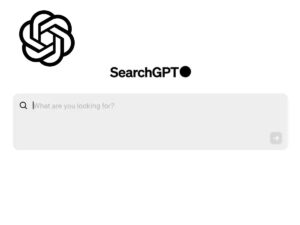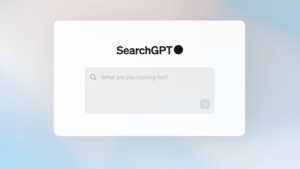
Search isn’t an isolated experience. The act of looking for information is now fused with validation, which means the socialization of search will unite discovery with context and relationships. It all begins with where we purposely search for relevant content and also where we respond to interesting information that crosses our path.
ComScore‘s most recent search engine ranking report offers new insight that will make us rethink how we publish content, increase its findability, and facilitate sharing.
In comparing February to January, Google remained on top with 65.4 percent of all core search activity. Yahoo followed with 17 percent and Microsoft ranked third with 11.3 percent.
Things become interesting when we analyze search queries as opposed to core search activity. The landscape broadens beyond traditional search.
Just behind Google, but ahead of Yahoo, YouTube ranks second for search inquiries overall. In 18th and 19th place, Facebook and MySpace also make appearances in the top 20 list respectively. Perhaps most intriguing is that neither Facebook nor MySpace offer true search functionality — but they still account for increasing search activity. Facebook is up 10 percent between January and February.
What does this all mean? As social networks gain in prominence, the amount of relevant information within each ecosystem increases in value and, as such, we deliberately seek content within the networks in which we engage.
It’s the Journey That’s Important, Not the Destination
Destination sites across the board are losing traffic and ultimately favor, simply because destinations are obsolete as intended or designed. The days of the traditional “start page” are coming to an end, only to be replaced with the “attention dashboard” — a dedicated application that aggregates the activity of those we follow in social networks into a series of digestible streams.
TweetDeck, PeopleBrowsr, Seesmic, HootSuite, Brizzly, and Facebook each represent a new generation of attention dashboards as they funnel social feeds into one clickable view. These streams look a lot like slot machines as information flies through dedicated columns, almost blurring the text beyond legibility. But this is where attention is focused and the content that appears within it represents the future of the information life cycle.
So how do we compete for attention if attention itself is learning how to adapt to a new media landscape?
Our job is to ensure that information travels outside of our domains and to the communities of interest in order to create a bridge back to our hub. And, content must adapt based on consumption and sharing patterns with our existing and potential stakeholders.
This is an important point and one that can’t be ignored. Social activity indicates that we are already moving away from the act of proactively traveling to traditional sites as a source of new content.
With the dawn of social media, the activity that brings social graphs and networks to life is quickly changing how we discover, learn and share and it is also forever reshaping the idea of online destinations as they exist today. It all comes down to attention and understanding where it’s focused and how it is tempted, lured, or distracted to click away from it.
The socialization of information is changing everything.
Connect with Attention Where Attention is Focused
Competing for attention is paramount. We lose most of the battles before they’re begun because we’re working against years of behavior that now represent the complete opposite of tomorrow’s consumption and sharing patterns.
Everything begins with identifying where attention is focused, combined with the new laws of attraction.

Gigya reviewed data from Compete from November 2009 and observed that some of the top media properties were already realizing a dominant effect in traffic from social networks. For example, USAToday receives upwards of 35 percent of its referral traffic from social networks and just over 6 percent from Google. People Magazine receives 23 percent of its referrals from social networks and 11 percent from Google. And, CNN earns 11 percent of its referral traffic from social versus 9 percent from Google.
Peer-to-peer activity strongly influences the resulting behavior of impressionable nodes defining social graphs, much in the same way we rely upon trusted referrals from our real life contacts. The more something appears within the attention dashboard, the more likely it is that someone will click through. In addition, the more intriguing it seems, or the stronger the reaction it engenders among peers, also increases its enchantment and thus beguiling spectators to willfully lunge towards a shared experience, most likely triggering a public response that continues the social effect.
Social Architecture and Connecting the Dots
Information is already socializing and changing the behavior for how people search, find, react, and curate. The difference between our present and future is defined by the roads and bridges we build between relevance and prevalence.
As content producers, our responsibility is to connect information and stories to existing and potential stakeholders. It’s also essential to package and optimize our content as social objects in order for them to work for us in our absence, when individuals actively seek content through contextual searches.
In part two, we’ll look at 11 steps for optimizing your brand for sharing and social search.
Originally posted in Search Engine Watch.
Connect with Brian Solis on Twitter, LinkedIn, Tumblr, Google Buzz, Facebook
—
Please consider reading my brand new book, Engage!
—
Get Putting the Public Back in Public Relations and The Conversation Prism:
—
Image Credit: Shutterstock









Interesting, so Google adding tweets to thier real time sarch is more about Google trying to keep up with the search changes.
Google is slowly losing traffic to social sites, mainly Facebook.
It seems that people rather get info from a friend or connection on a social site, then searching Google.
We all put importance in a referral in everything we do, now seems to be working with searching information.
Indeed John…well stated.
Yah, you are write. Maybe all the nonsense articles that you get when you search for a keyword in a search engine pushed people to just ask from a friend or a source about good sites to go to. Sometimes, word of mouth through social media is more reliable than using a search engine. I will not be surprise if one of these days a social media will replace search engines.
Global Royalties
Hi Brian, Interesting article.
I also believe that the destination site is gone. There are so many sites to go to you want to go to one and get a snap shot of what is happening on the others. But sometimes you cannot aggregate all the content so, for example, if you are a company selling products your products need to be for sale on lots of sites not just one (i.e. your destination site). I think distributed shopping is going to big business where companies will see their products on many sites (using widget type technology). What does everybody else think?
Exactly, and those products need to reach the attention dashboards of customers, prospects of influencers to connect the dots.
BINGO! I agree 100%. Well said. That's what I was trying to say. You just did a better job at it.
Also 100% agree. Technology companies specializing in aggregation and developing interactive widgets are currently and will continue to be having a freaking party with all of the potential here. I think I'm in the wrong business… 🙂
Interesting, and as more products aggregate in places like nexttag, the more those sites get in SEO/rankings. Cyclical!
Antje, yes!
I've been in business online for 14 years. It's amazing to see how surfing habits have changed. I really feel Facebook and Twitter (to name a few) have become the portals and the sites people rely on to find the content they are looking for. In the past you'd find what you were looking for via a search engine and then you'd bookmark your favorite sites. I get the feeling people no longer behave that way and I believe these stats really drive that home.
I find it fascinating to see the symbiotic relationship with how search molds itself to fit user patterns, who in turn, fashion the means by which the “attention dashboards” are shaped.
Fascinating. Endlessly. Thanks for the post! Best, M.
I find it fascinating to see the symbiotic relationship with how search molds itself to fit user patterns, who in turn, fashion the means by which the “attention dashboards” are shaped.
Fascinating. Endlessly. Thanks for the post! Best, M.
Brian…Thanks…Looking forward to Part Two…
I believe we all have to embrace some of these trends and statistics in order to effectively market our products / services. I am not sure if the data is available; however, I would be very interested to see how many actual product / service conversions actually took place as a result of the search activity being directed from the various Social Marketing sites. At Stellarpoint, we remain focused on the various aspects of social marketing but also emphasize the critical importance of actual conversions.
While currently impossible to completely evaluate – bounce rates and conversion analytics are the closest barometers – it would be invaluable if a company could determine (on a macro level) which Social Marketing avenues are more effective with regards to actual conversions…..Probably very different for different areas…Thanks Again….
Ironic as it may be, the search engines that sit on top of the social networks lack the granularity of the search engines in news, eCommerce, and media whose platforms they feed.
Thanks for the interesting post! It really got me thinking how the attention dashboards of social media can act as a sort of filter of convenience. We, for the most part, get to customize the type of information that greets us when we log on to sites like Facebook, or even on a customized home page like MSN or iGoogle. Instead of being bombarded with social feeds from a mass amount of friends and businesses, we now have the ability to weed out the channels we do not want to hear from. The same is true for the sites like MSN or iGoogle, you can customize what type of news stories appear on your personalized home page. While this a convenient way for the users to avoid unwanted noise, it does present a problem for organizations that are trying to spread their message through social media or other dashboard Web sites. If we are able to act as our own gatekeepers, how do they get in? As you said, the socialization of information changes everything. The challenge is for organizations to form their messages in a way that is simple and engaging and can easily be spread from one person to another via social media. I know I am more likely to pay attention to a news story or a Web site if one of my Facebook friends has linked to and it has appeared on my news feed.
Google is becoming more social orientated…they have always tried to harness the power of citation by placing a high value on links…while the social networks seem to be becoming more search orientated, or at least consumers are turning to them for research rather than finding suppliers. Divergence is just a matter of time.
Great post! Thanks for sharing the info, interesting to see how much SM is boosting site traffic.
CW
CWalkerPhotography.com
Very interesting looking forward to Part 2. I am retweeting the post. I really like the term “Attention Dashboard”.
Rob
Thanks Rob!
Interesting. Does this mean Google is dying? You're probably right. This is a growing trend. More and more people share links in Facebook and twitter. Blog articles spread around more often in twitter than for it to show up in google–especially new articles. But I don't think I'm ready to believe it will replace search engines and Google is far from dying. I guess this is why they have branched out from just being merely a search engine. Let's face it…any human would rather trust a friend referral than something google would suggest. It has more credibility.
With this growing trend, the problem would be how to reach your audience. A lot of companies have already included this http://sn.im/uxp2a in their strategies.
Brilliant Brain. I am also half way through Engage, talk about food for thought! This post really embraces the many to many concept. What I really find invigorating and empowering is that we the users are the actual agents of change and to understand this change, it is not sufficient to be a analyst, you have got to be engaged and an integrated part of the ecosystem. The user cannot be mislead into new trends neither by stick nor carrot. This goes beyond democracy, as implemented in today’s society, this is synergy. I look forward to following your most insightful posts.
First, thank you for reading the book. Second, agreed. 🙂
Thank you – interesting development.
Social media potentially reflect better how people think than search engines.
Searching has become so customized through all of the different social media sites. However, with the growth of social media, does our quality of knowledge go up or down? Are we really getting more answers or clutter?